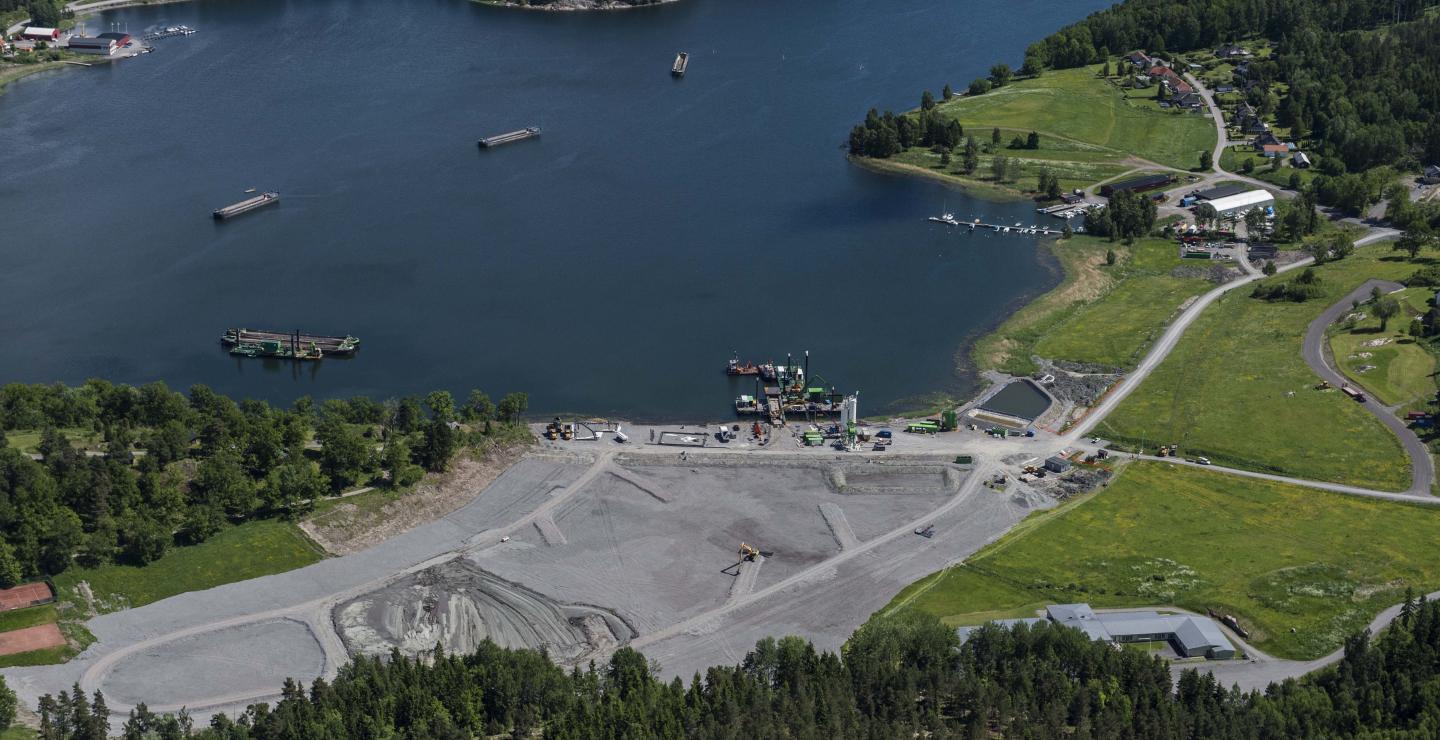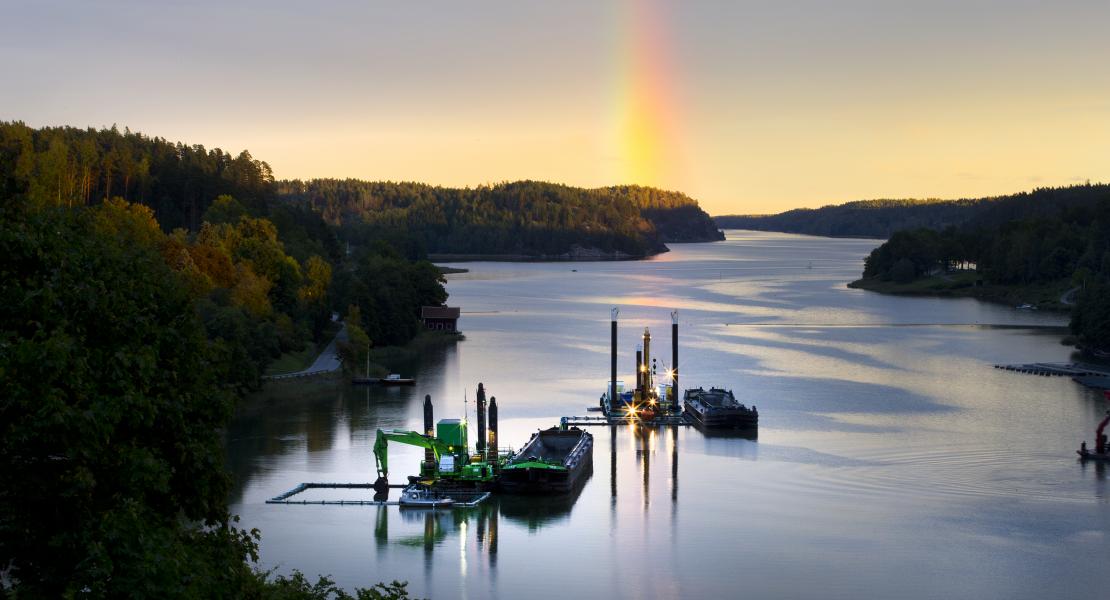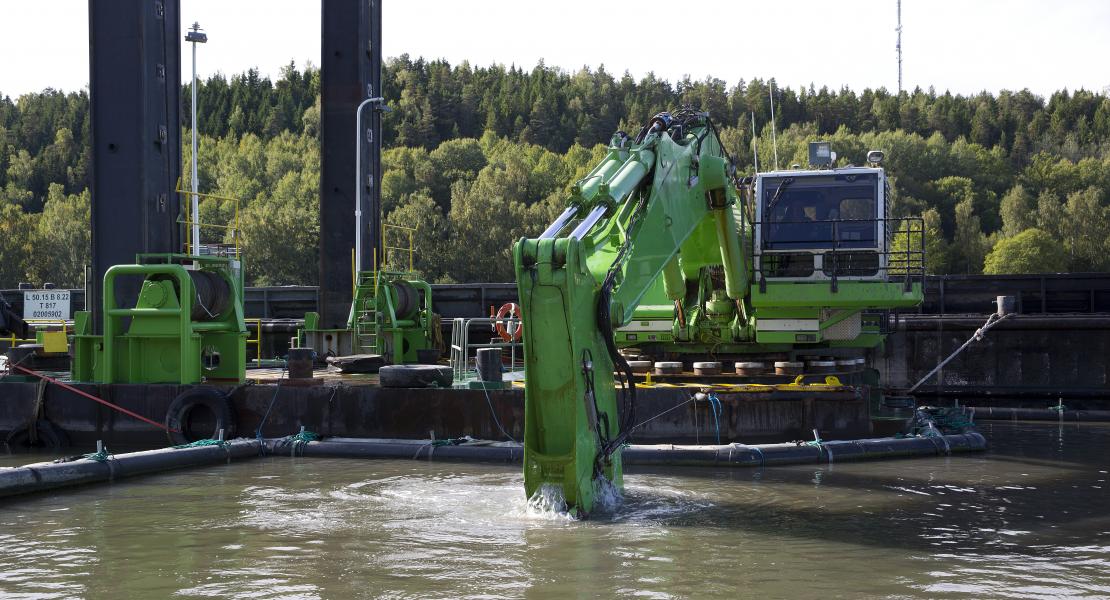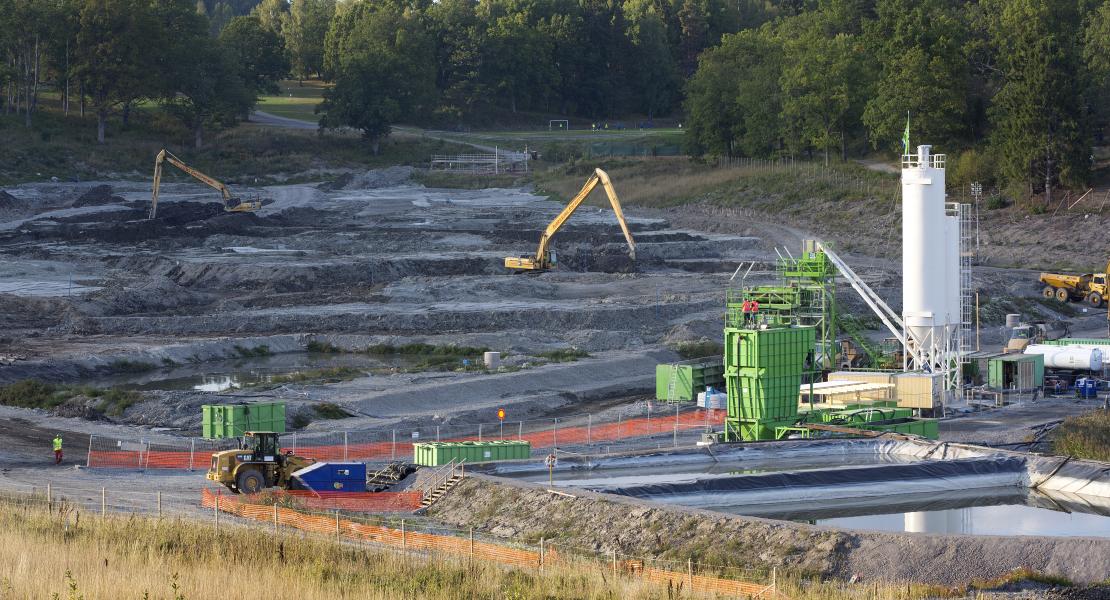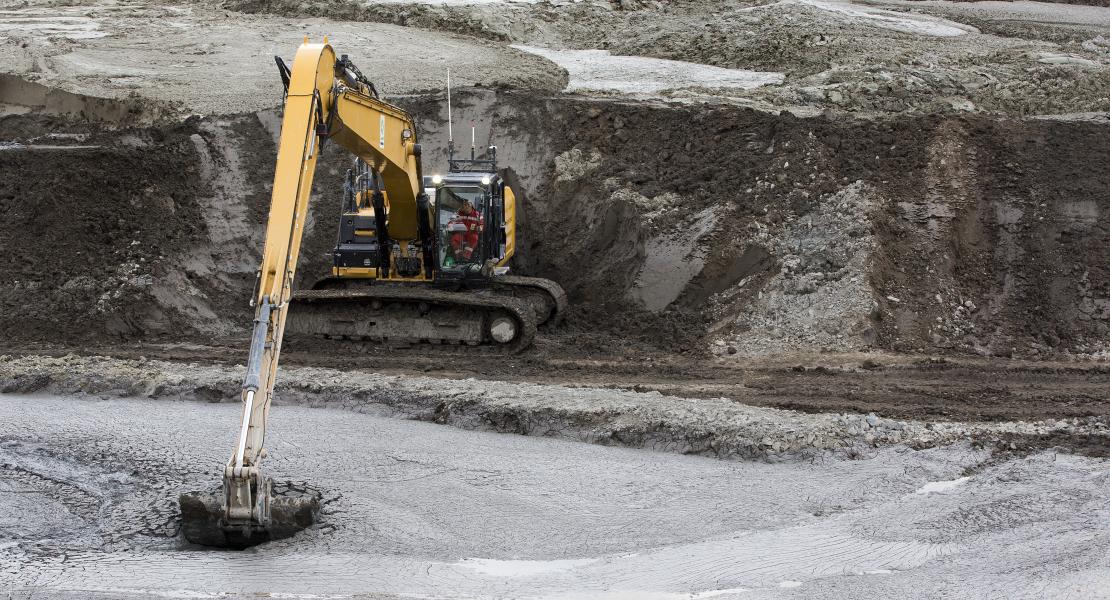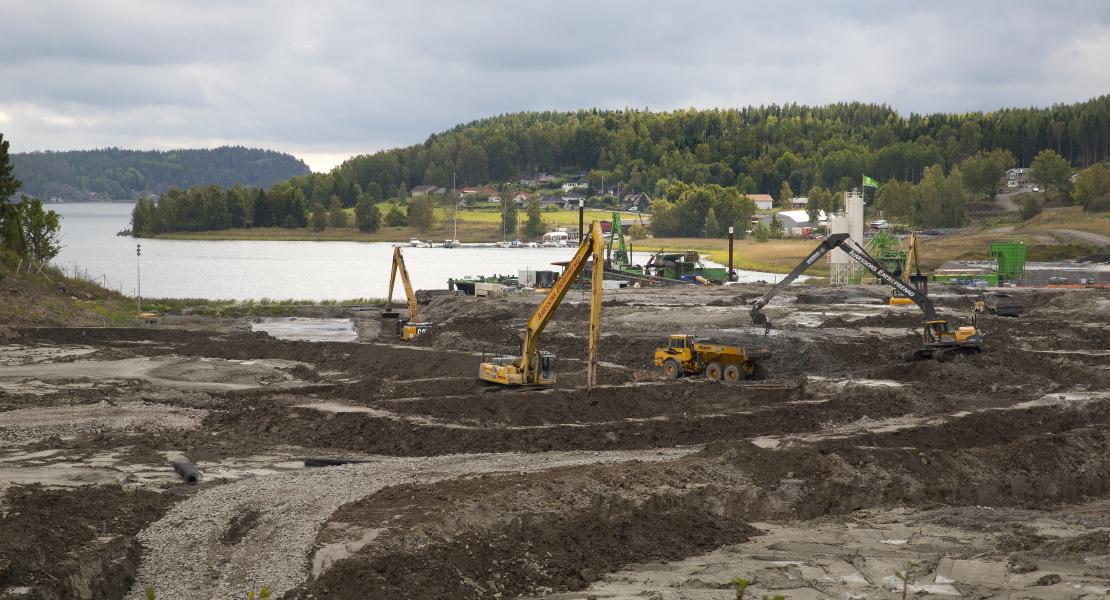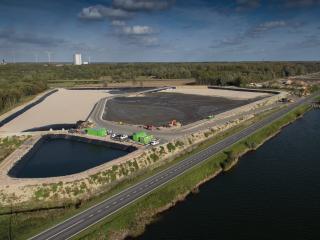Ground reinforcement of the coastline at Grännäs filling area
First of all, we constructed an access road to the filling area. We carried out soil reinforcement measurements which included the installation of 313,000 m of lime cement columns in this area.
Ground reinforcement of the waterfront at Centralplan
We removed boulders from the existing filling in the area and then performed soil reinforcement measurements consisting of the installation of 46,000 m of lime cement columns. In addition, we constructed a new bank to protect against erosion.
Reinforcement of the Sahlin area
This area was reinforced by the installation of 29,000 m of lime cement columns. Other activities we carried out included the demolition of buildings, the excavation and installation of shore covering and the construction of cycle/pedestrian paths.
Dredging of Cr-contaminated sediments in Valdemarsviken
We were responsible for the detailed design and execution of the dredging of the contaminated sediments, subsequent dewatering and stabilisation, and ultimately their disposal in an authorised landfill. Before the dredging activities could start, divers cleared any obstacles from the seabed. We then started the dredging works in April 2013.
Remediation of the landfill at Grännäs
The dredging of the contaminated sediments represented finally about 170.000 m³ in the port and adjacent areas. We dredged approximately 9.000 m³ of contaminated sediments from the near-shore and along the quays, and performed the progressive installation of supporting filling. In the other parts of the area, we dredged approximately 161.000 m³ of Cr-contaminated sediments. We then carried out further treatment by dewatering and stabilisation. The water originating from the dewatering was treated before being discharged.
After dewatering, the dredged materials were used for filling a land area (around 75,000 m²), which will be used for recreational purposes in the future after the stabilised sediments had been capped. Capping included the installation of a sealing layer of clay geomembrane (bentonite mat) and a synthetic geomembrane.
Treating water flows from barges and the landfill
At the site we dredged the polluted sediment from the fjord using an excavator and transported it to shore using barges. After treatment, the sludge was deposited in a landfill on site. During the site activities, we identified two separate flows of water that had to be treated – a flow from the barges and from the landfill.
After transport, the sludge had settled in the barge, leaving a layer of water on top, which we had to pump off. This flow contained large amounts of suspended solids (up to 10 g/l) but also small amounts of heavy metals. Additionally, some leaching had occurred from the treated sediments. We therefore collected this leachate in a ditch and mixed it with rainwater that had fallen onto the landfill. The landfill water had a high pH (up to pH 13) and contained suspended solids.
Barge water
Given the difference in the quality and quantity of the two water flows, we treated them in two separate lines, which eventually converged into a large settling basin. The treatment of the barge water mainly focused on the removal of suspended solids, consisting of a coagulation followed by several neutralisation processes and a flocculation with a poly-electrolyte. This coagulated the suspended solids into flocks that then settled in a lamella separator, resulting in an overflow of clear water at the top of the separator. We then mixed the sludge that settled in the separator with the sludge from the barges and treated it accordingly.
Landfill water
The treatment of the landfill water concerned the removal of suspended solids and the reduction of chromium. We pumped the landfill water from the ditch into an open, 20ft buffer. Following neutralisation phases to reduce the pH level, poly-electrolyte was dosed to conglomerate the coagulated particles into flocks. The flocks settled in the settlement basin, where the water was also mixed with the treated barge water. We pumped the water mixture from the settlement basin to a sand filter for the removal of any remaining suspended solids and discharged. Our solution to containerise the entire installation, including the large lamella separator, made the installation easy to transport and mobilise, which is perfect for short-term projects. It also helped protect the installation from the weather.
